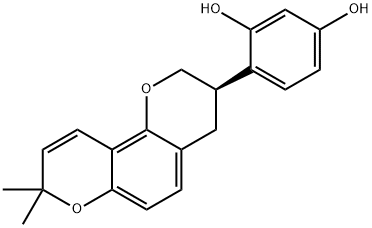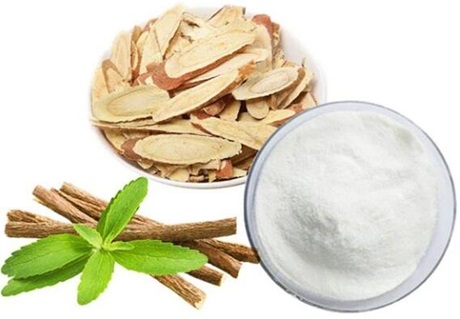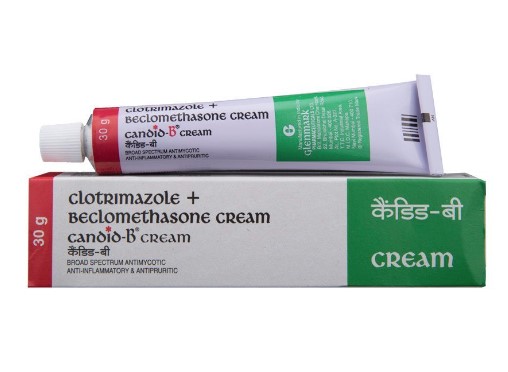The antibacterial and skin-whitening property of Glabridin
Description
Glabridin (C20H20O4), a tyrosinase inhibitor, is the main secondary metabolite of the rhizomes of Glycyrrhiza glabra which belongs to flavonoids. It is a major hydrophobic flavonoid isolated from European licorice, Glycyrrhiza glabra L.var typica, and G. glabra L. var glandulifera, exhibits multiple pharmacological activities including estrogenic, antioxidative, anti-proliferative activity against human breast cancer cells[1]. Licorice extract is also known as glabridin. This compound is a natural plant-derived compound and has been widely used in medicine and cosmetic applications.
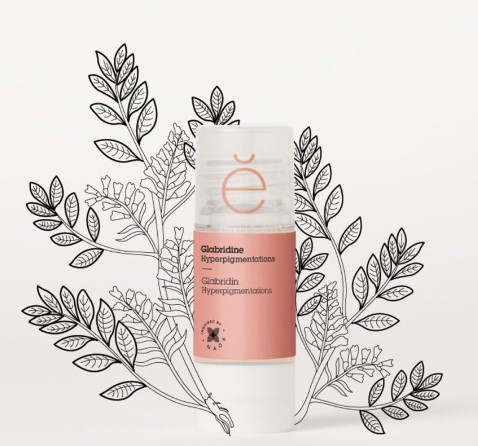
Biological function
Recent studies revealed that glabridin shows a variety of biological activities. It presents great application value because of its antioxidant, anti-inflammatory, melanin production inhibition, and antitumor properties, among others. Preliminary research shows that glabridin has a significant inhibitory effect on several plant pathogens, especially F. graminearum Schwabe which can cause Fusarium head blight (FHB) in cereal crops[2].
Fungicide
Glabridin can potentially be used as a fungicide and it has a great potential for utilization in production because it is low toxicity, high activity, simple structure, and easy to modify. FHB has been recognized as one of the main threats to global crop production, not only resulting in yield losses but also producing a variety of toxins in wheat grain. In practical production, only a few fungicides are used for the control of FHB, but most of them have now become resistant to F. graminearum. Yang et al. speculated that glabridin can act on ergosterol biosynthesis-associated proteins to destroy the integrity of the membrane structure, resulting in abnormal transmembrane transport, which in turn affects the activity of intracellular enzymes, leading to disorders of intracellular substances and energy metabolism[2]. Ultimately, the morphology of the mycelia is seriously deformed, growth and development are inhibited, and death may even occur.
Skin-whitening agent
Skin-whitening agents are desirable when they inhibit the synthesis of melanin in melanosomes by acting specifically to reduce the activity of tyrosinase, exhibit low cytotoxicity, and are nonmutagenic. Glabridin has potential use as a skin-whitening agent in cosmetic products because Glabridin has stronger tyrosinase inhibitory activity than kojic acid. It was shown to reduce UVB pigmentation and erythema in guinea pigs when applied for 3 weeks after UVB irradiation. Its water insolubility limits its wide application[3]. To solve this problem, glabridin liposome has been developed to improve its poor bioavailability[1]. It is surprising that the application of GL can effectively relieve UV radiation-induced erythema and leathery skin, associated with the down-regulated expression of inflammatory cytokines (TNF-α, IL-6, and IL-10).
References
[1] Zhang C, et al. Evaluation of Glabridin loaded nanostructure lipid carriers. Journal of the Taiwan Institute of Chemical Engineers, 2016; 71: 338-343.
[2] Zhang C, et al. Glabridin liposome ameliorating UVB-induced erythema and lethery skin by suppressing inflammatory cytokine production. Journal of Microbiology and Biotechnology, 2021; 31: 630-636.
[3] Yang C, et al. Study on the fungicidal mechanism of glabridin against Fusarium graminearum. Pesticide Biochemistry and Physiology, 2021; 179: 104963.
You may like
Related articles And Qustion
See also
Lastest Price from Glabridin manufacturers
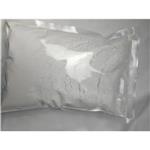
US $0.00-0.00/G2025-06-13
- CAS:
- 59870-68-7
- Min. Order:
- 0.1G
- Purity:
- 99.99%
- Supply Ability:
- 200000T

US $0.00-0.00/kg2025-06-11
- CAS:
- 59870-68-7
- Min. Order:
- 0.0001kg
- Purity:
- 99.99%
- Supply Ability:
- 200000t
